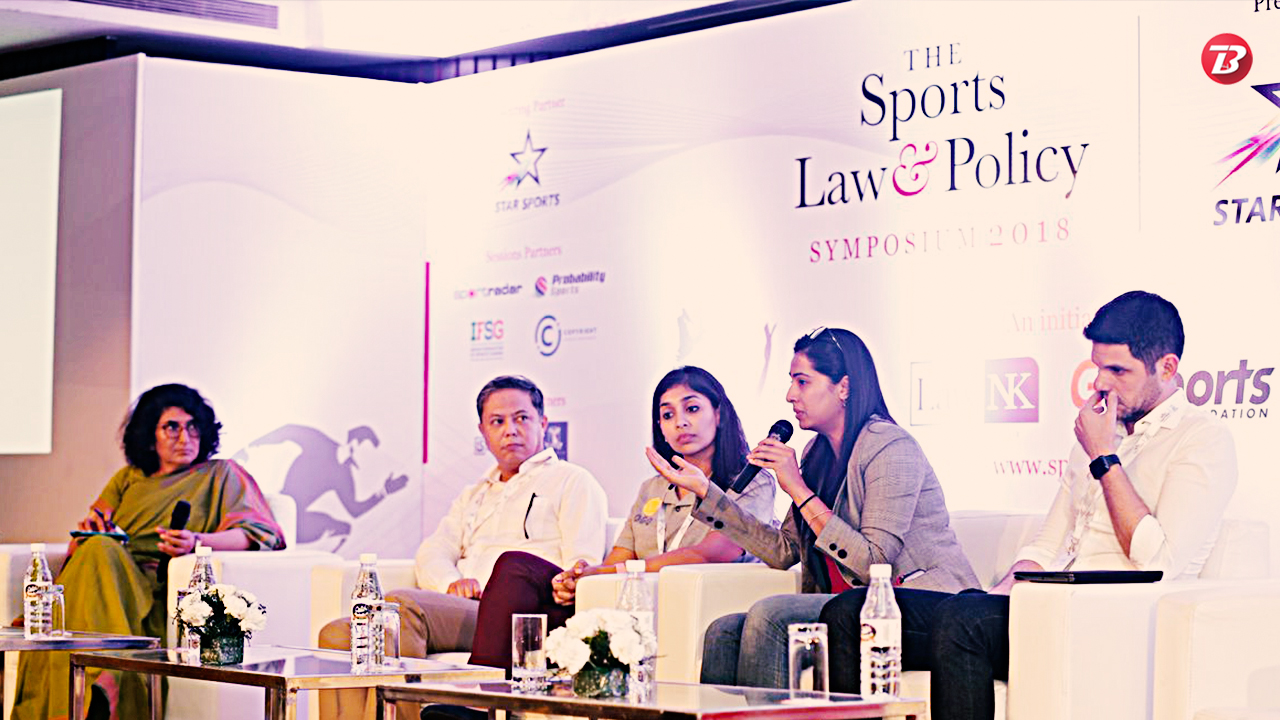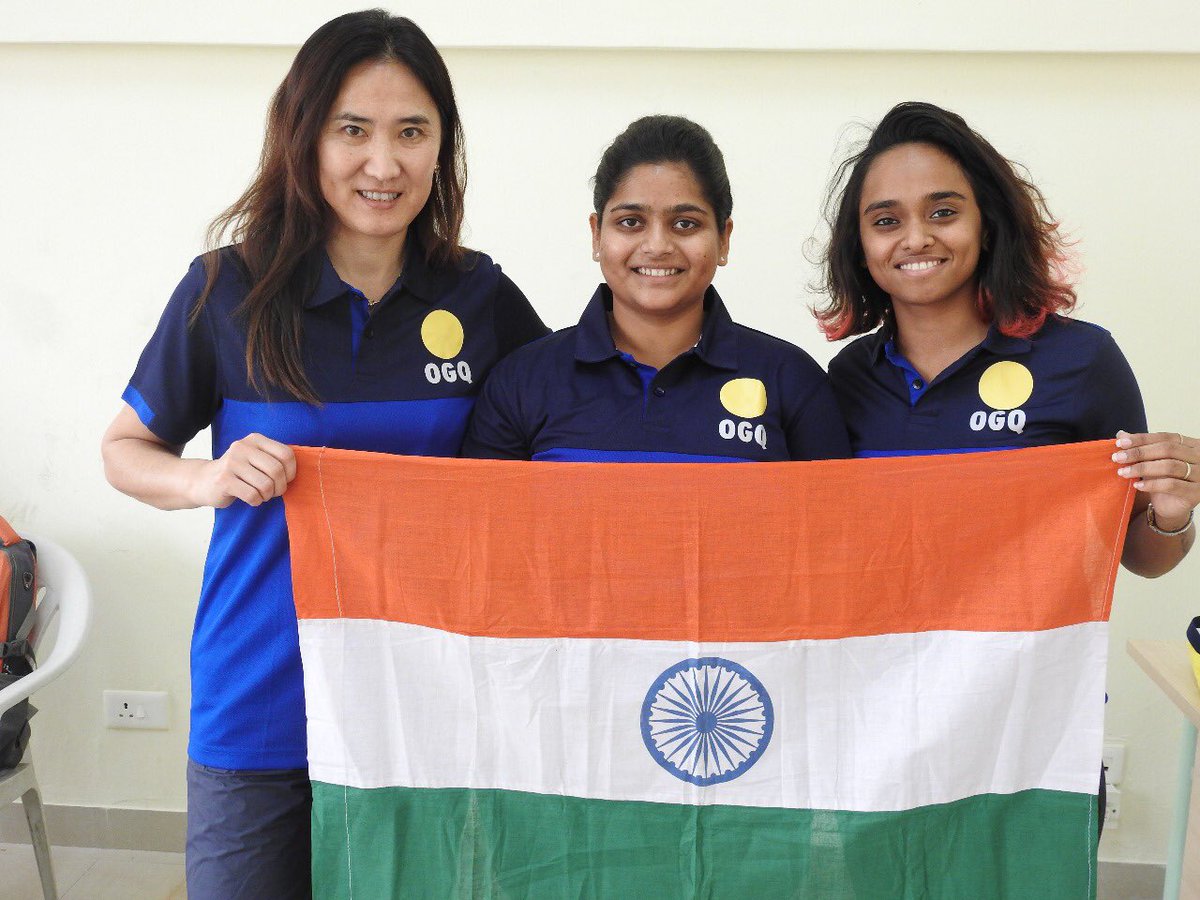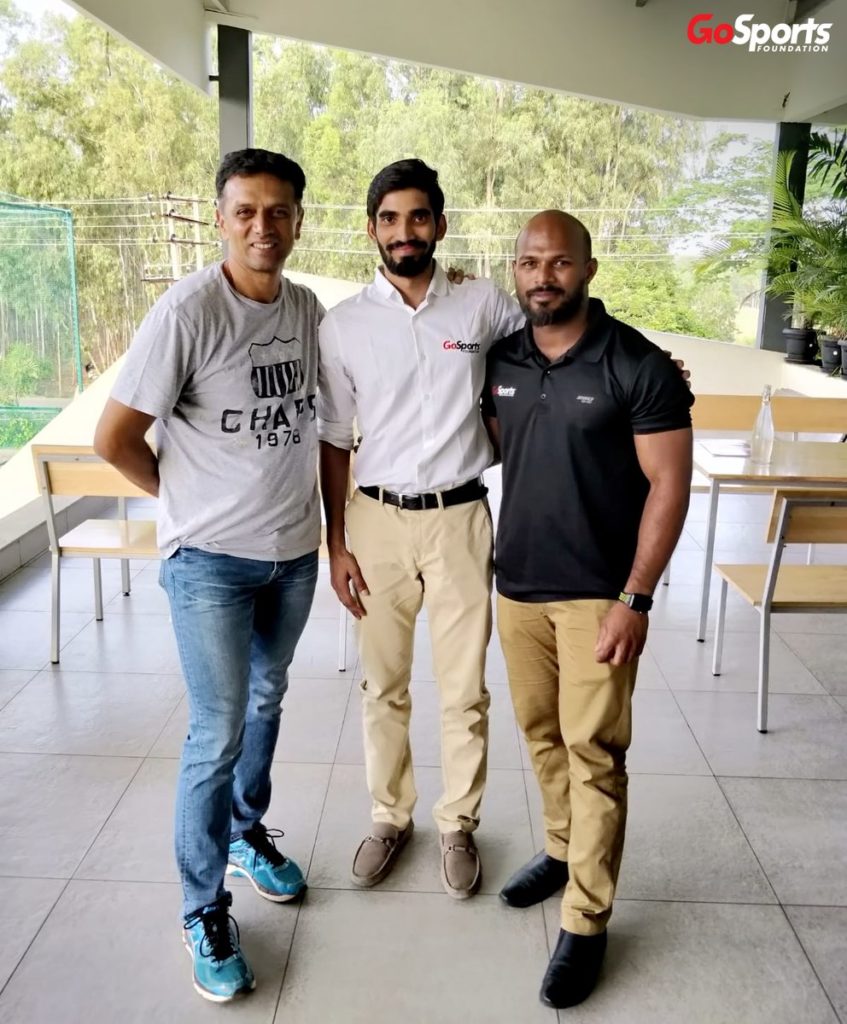Begin typing your search above and press return to search.
Asian Games
Just 6 grams of Gold: Empowering India's future Olympians to go for glory

Over the past decade, the demographics of Indian sport have undergone extensive modifications- all done, of course, with a view of changing the country's current standing in sports. To do this, it was necessary to recognise that there was a problem with the way things were being run in the first place. Popular culture and selectively highlighted stories of athlete struggles have successfully built up a narrative along the lines of holding the government, the system and Federation at fault for everything that is wrong with Indian sports. Of course, for all three of these stakeholders, their position of power comes with a tremendous amount of responsibility- and it is a responsibility which is carried out in a way that does not often meet the expectations of the general Indian populace. About a decade back - there was a significant shift in the way things were run. There was a new stakeholder in place who had voluntarily decided to take on the responsibilities of doing what the official administration was supposed to. That is when the concept of non-profit ventures in the best interests of Indian sports was born.  The names included Charles Atkinson of England for boxing, Kim Hagyong of Korea for archery, Vladimer Mestvirishvili of Georgia for wrestling as well as Kim Seonil (Korea), Munkhbayar Dorjsuren (born in Mongolia but a German citizen) Lazslo Scuzak (Hungary) and Anton Belak (Slovak Republic) for shooting. Out of these, Rahi later went ahead and hired Munkhbayar Dorjsuren as her personal coach up until the 2020 Olympics. Although Rahi categorically stated she did so out of her own savings, the connection may have helped the 27-year old shooter make an impactful comeback to the circuit after a potentially career-threatening injury a few years back. This is not to undermine the administrative work that the Federations do to make life easier for athletes. The bureaucratic system of Indian politics, however, implies that a process of change of modifications to the current system would be inherently slow. Despite the obvious flaws, however, it would be impossible for any such non-profit organisation to carry out their well-intended programs thus further accentuating the need for a wholesome system which includes all the major stakeholders to work together.
The names included Charles Atkinson of England for boxing, Kim Hagyong of Korea for archery, Vladimer Mestvirishvili of Georgia for wrestling as well as Kim Seonil (Korea), Munkhbayar Dorjsuren (born in Mongolia but a German citizen) Lazslo Scuzak (Hungary) and Anton Belak (Slovak Republic) for shooting. Out of these, Rahi later went ahead and hired Munkhbayar Dorjsuren as her personal coach up until the 2020 Olympics. Although Rahi categorically stated she did so out of her own savings, the connection may have helped the 27-year old shooter make an impactful comeback to the circuit after a potentially career-threatening injury a few years back. This is not to undermine the administrative work that the Federations do to make life easier for athletes. The bureaucratic system of Indian politics, however, implies that a process of change of modifications to the current system would be inherently slow. Despite the obvious flaws, however, it would be impossible for any such non-profit organisation to carry out their well-intended programs thus further accentuating the need for a wholesome system which includes all the major stakeholders to work together.  The critical thing to remember here is that everyone is on the same team. The Sports Ministry, the federations under it and these non-profits. Loose ends need to be tied up and the system, made more transparent. You may not agree with all the methods employed by the organisations spoken of above but you certainly cannot deny their contributions. Hopefully, a more sustainable system bringing together all partners is in the offing soon.
The critical thing to remember here is that everyone is on the same team. The Sports Ministry, the federations under it and these non-profits. Loose ends need to be tied up and the system, made more transparent. You may not agree with all the methods employed by the organisations spoken of above but you certainly cannot deny their contributions. Hopefully, a more sustainable system bringing together all partners is in the offing soon.
Empowering India's future Olympians
"Initially, our strategy was to improve India's overall positioning when it comes to medals won in the history of Olympics," says former Olympian and swimmer Hakimuddin Habibullah, who was associated with the GoSports Foundation when it was formed in 2008. "We started out with swimming, my background in it was a happy coincidence," he continues in a conversation with The Bridge. The choice of swimming as the sport to focus on as a sport for GoSports was not a random one. As Habibullah mentions, the discipline is one which yields among the highest returns on investment when it comes to Olympic sports. With the most number of Gold medals up for grabs in all major multi-sport competitions, Swimming also has the added advantage of a single versatile athlete who may be trained to participate in multiple events. If improving the medal tally of India is indeed the objective, grooming potential swimmers might seem to be the option that is most strategically viable. It is an argument along similar lines to the one that suggests that supporting individual sports more than team sports is financially feasible. The athlete to medal ratio when it comes to team sports is particularly imbalanced. That is not to say that no support or encouragement should be given to Indian teams playing internationally - just that a smarter system of official, government funding should be put in place. So, what did GoSports do about it? Two of their earliest supported athletes were none other than Virdhawal Khade and Sandeep Sejwal - two immensely bright prospects when they were in the latter half of their teenage years. Their body structures, physique and a natural affinity towards water did put them as the best bets India would have to bank Mon when it came to swimming for a long time to go and, the best part is, they are still at the peak of their careers. Also Read: A new dawn of Swimming in India Supporting an athlete's journey is all well and good. But unless the non-profit ventures figure out a perfectly balanced way of working with the government when it comes to athlete upliftment, a very major bond in India's sporting ecosystem will remain incomplete. Continuing on the example of swimming itself, the countries strong in the discipline have many competitions at every possible level. In 2013, USA Swimming surpassed 400,000 members in what was a record year- the existing pool of talent to work with, therefore, is already high. Compare that to India where the number of domestic competitions in the discipline is exponentially low. This has sort of stagnated the sport to such an extent that now, even a decade later, it is still Virdhawal Khade who continues to rule the pool, continues bettering his personal bests and records; Sandeep Sejwal is still among the best of talents produced by India. The rise of youngsters like Srihari Nataraj, although encouraging, remain few and rare in number. So even if an organisation is willing to support an athlete, the chances are that the effort turns futile after a certain point because of this particular gap in the way things are run. Training abroad and other such factors, therefore, turn out making the venture not so cost effective.It takes just 6 grams of gold to lift the worth of a nation
Coming to yet another such organisation in India, the Olympic Gold Quest, headed by CEO Viren Rasquinha, were deemed as very credible immediately post the London Olympics way back in 2012 where 4 out of 6 medalists were supported by OGQ. "There is a big need of having retired athletes, the actual people who understand the system, to be absorbed back into it," says Neha Aggarwal, the former Olympic Table Tennis player and the Head of Partnerships and Communications at OGQ. "That is when the urgency of the situation and why it is important to rectify it would be understood. I think if we could have that sort of a system even in a couple of sports when it comes to federations- it would be a gamechanger." "Times are changing. Federations are looking out for athletes more than before, but if we are not collaborating, then we will not see Indian athletes on the podium," she adds. On that note, it would probably be prudent to mention here that OGQ personifies the entire process of felicitating the participation of former athletes in their talent identification and grooming programs. The organisation itself was founded by the legendary Prakash Padukone and Geet Sethi with stalwarts like Viswanathan Anand and Leander Paes among their board of directors. Like GoSports, they have the fixed and specific disciplines that they concentrate on. In addition to supporting the brilliance of Indian boxers, archers and athletes like PV Sindhu and the likes of Bajrang Punia and Vinesh Phogat, a recent addition to the team, a major chunk of their athletes are shooters. Every youngster that has been smashing records and grabbing the eyes of international media for ousting Olympic and World Champions at the tender ages of 15 or 16, you will find them all donning an OGQ jersey. Senior shooters do not miss out either. To highlight this point in the current context, let us take the example of shooter Rahi Sarnobat - few days back, she became the first Indian woman to win an Individual Gold in Asiad shooting. Also Read: Glory, injury, and back to podium - Rahi Sarnobat In October 2017, seven foreign coaches in four disciplines were roped in by OGQ for the benefit of nearly 80 junior and senior sportspeople in the Indian circuit. This was done as, according to an OGQ press release, research "has shown that foreign coaches bring in invaluable knowledge on the techniques, strategies and training methods used by top athletes worldwide which is important to implement in training of our Indian athletes as they prepare for the Olympic Games.” The names included Charles Atkinson of England for boxing, Kim Hagyong of Korea for archery, Vladimer Mestvirishvili of Georgia for wrestling as well as Kim Seonil (Korea), Munkhbayar Dorjsuren (born in Mongolia but a German citizen) Lazslo Scuzak (Hungary) and Anton Belak (Slovak Republic) for shooting. Out of these, Rahi later went ahead and hired Munkhbayar Dorjsuren as her personal coach up until the 2020 Olympics. Although Rahi categorically stated she did so out of her own savings, the connection may have helped the 27-year old shooter make an impactful comeback to the circuit after a potentially career-threatening injury a few years back. This is not to undermine the administrative work that the Federations do to make life easier for athletes. The bureaucratic system of Indian politics, however, implies that a process of change of modifications to the current system would be inherently slow. Despite the obvious flaws, however, it would be impossible for any such non-profit organisation to carry out their well-intended programs thus further accentuating the need for a wholesome system which includes all the major stakeholders to work together.
The names included Charles Atkinson of England for boxing, Kim Hagyong of Korea for archery, Vladimer Mestvirishvili of Georgia for wrestling as well as Kim Seonil (Korea), Munkhbayar Dorjsuren (born in Mongolia but a German citizen) Lazslo Scuzak (Hungary) and Anton Belak (Slovak Republic) for shooting. Out of these, Rahi later went ahead and hired Munkhbayar Dorjsuren as her personal coach up until the 2020 Olympics. Although Rahi categorically stated she did so out of her own savings, the connection may have helped the 27-year old shooter make an impactful comeback to the circuit after a potentially career-threatening injury a few years back. This is not to undermine the administrative work that the Federations do to make life easier for athletes. The bureaucratic system of Indian politics, however, implies that a process of change of modifications to the current system would be inherently slow. Despite the obvious flaws, however, it would be impossible for any such non-profit organisation to carry out their well-intended programs thus further accentuating the need for a wholesome system which includes all the major stakeholders to work together. Going for glory
The question, however, crops up as to how these organisations carry out their talent identification processes. What makes them potentially more efficient than the government at spotting future champions and recognising them at a young age? PV Sindhu, for example, has been associated with OGQ since she was 15. On this issue, Mustafa Ghouse, a former Indian Tennis player and Asiad medalist and the CEO of JSW Sports has an amusing anecdote to share. "An acquaintance came to tell me about the son of a friend of his who was a potential world-class athlete; I was asked if I would be interested in taking a look. Eventually, we sent him abroad for training and assessment and today, Tejaswin Shankar is a well-known name in the circuit, and among the best athletes India has seen," he says. "Ideally, better communication between all parties would ensure a better talent identification than this at least," he laughingly adds. https://twitter.com/IIS_Vijayanagar/status/1033004888349761537 Recently, the most significant contribution of JSW perhaps is the recent setup that is the Inspire Institute of Sports (IIS) - a privately funded academy in Vijayanagar in Karnataka that boasts of world-class facilities that have opened the doors to Indian athletes to avail themselves of the facilities. As evident, the organisation, the newest of the three, has made tremendous strides in athletics and boxing regarding providing the necessary infrastructure which is often not available in government facilities due to a low CSR funding when it comes to sports investments by private companies in India. There are several positives. If one remembers correctly, the 2018 Commonwealth Games proved to be a road to redemption for weightlifter Sathish Sivalingam who eventually won the Gold. What is not known, however, is the undue amount of pain he was in during his event courtesy a recurring injury. With a physiotherapist not cleared to travel to the Athletes village with the lifters, the job eventually fell to a GoSports appointed one. Even before the actual tournament, it was this doctor who helped Sathish at least deal with the injury and train through it. "That medal will always be special because it was a clear incident where we all worked together- us, the federation, the officials," says Deepthi Bopaiah, the Executive Director of GoSports. "When an athlete is injured, that's a priority. You do not have time to go through all the necessary formalities- not when you have a world level event in the next few hours." The critical thing to remember here is that everyone is on the same team. The Sports Ministry, the federations under it and these non-profits. Loose ends need to be tied up and the system, made more transparent. You may not agree with all the methods employed by the organisations spoken of above but you certainly cannot deny their contributions. Hopefully, a more sustainable system bringing together all partners is in the offing soon.
The critical thing to remember here is that everyone is on the same team. The Sports Ministry, the federations under it and these non-profits. Loose ends need to be tied up and the system, made more transparent. You may not agree with all the methods employed by the organisations spoken of above but you certainly cannot deny their contributions. Hopefully, a more sustainable system bringing together all partners is in the offing soon.Next Story






